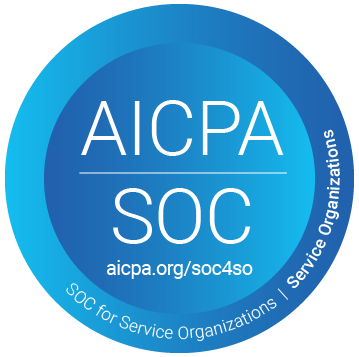
Customer Success: The Key to Business Success
“It is more expensive to generate a new customer than to keep an existing customer” is common knowledge in business. The principle of retaining customers is the main driving force behind Customer Success: give customers a good experience and you’ll keep their business or generate positive referrals.
What Is Customer Success?
Customer Success is the proactive action taken to ensure customers have the best experience when using your product. This means helping them get the most value out of their purchase and asking for thorough feedback to make improvements. Customer Success is an ongoing process where each piece of information helps refine or reinforce your business methods
It is not the same as Customer Support, which focuses on helping the customer with a specific action or question. While Customer Success is proactive, support is reactive, meaning it will not be triggered unless there is a concrete problem. It is an action resulting from a customer request.
Ultimately, effective customer success strategies create less customer churn, lower acquisition costs, and create more opportunities.
Customer Experience vs. Customer Success: differences and similarities
Both customer experience and Customer Success have the same objective and influence one another. When customer experience is improved, Customer Success will be higher. There is, however, a scenario where customer experience is terrible, and Customer Success is the key to improving it.
The difference between these two sides of the coin is their location in the customer journey. Customer experience studies the client while using the product. Customer Success analyzes if clients get what they are looking for.
Why Is Customer Success Important?
When Customer Success succeeds, the customer becomes loyal and, ideally, an unofficial ambassador of your company or product. In insurance, Customer Success is the prompt resolution of a claim. Transparency in the process, and efficient communication with the insured all contribute to Customer Success.
Customer Success reduces churn, improves renewal rates, and drives revenue when done effectively. Customer Success also provides essential insights into how and why people use your product or service.
So, how do you make customers successful?
6 Steps to Improve Customer Success
We have compiled a list of what we think are the most crucial aspects of Customer Success and how to use them to your advantage.
Implementing these steps will also help you produce a comprehensive Customer Success strategy. Without a strategy, success is exceedingly tricky. So, here are the five key steps to improving Customer Success:
- S.M.A.R.T Objectives
Smart is an acronym that combines five words: Specific, Measurable, Achievable, Realistic, and Timely. These five characteristics ensure improvement and goal completion in the long run. When you find a problem and set a smart objective, the problem will be isolated and contextualized. The solution will be quantified and achievable. In Customer Success SMART objectives are connected to performance and to communication. - Onboarding, Onboarding, Onboarding
Onboarding clients and teaching them how to use your product is fundamental to helping them make the most out of it. To achieve Customer Success, customers must know what the system is supposed to do and what it’s capable of, which will also set reasonable expectations. Transparent communication is always a must.
- Build Relationships
We cannot stress enough how meaningful relationships are in Customer Success. The client must feel comfortable sharing their frustrations or requests. Client feedback can drastically improve a product simply by allowing clients to point out what needs to be fixed or improved. Fluent relationships with clients will give them a trustworthy environment to share honest insights on the user experience. - Databases
Databases give you historical information to make informed decisions. Clients will provide information about how they use your product. Each piece of information will give you fundamental knowledge on your product and your customer base. - Dedicated Team A dedicated Customer Success team will ensure that the correct objectives are in place, relationships are taken care of, onboarding is correctly assessed, and that all customers are happy.
- Segmented Customer Base It’s essential to know whom you are trying to serve. The same approach will not work for all of your customers. Different industries have different needs and so do your customers. That’s why you want to create segments. Having a few specific demographics, you are working to understand, and address makes your work at hand much easier to define.
Technology Is Here to Help
Throughout this article we have reviewed the importance of Customer Success and many vital aspects that determine success. One aspect we haven’t discussed is fundamental to understanding Customer Success: the tools you use to track your customers’ opinions, experiences, and how the product performs.
Depending on your industry, the tools may vary, but the technologies are the same. The four most prominent examples of tracking technologies to improve success are:
- Automated Workflows
Here, tasks are automated or immediately assigned to the person in charge of completing them. Automated workflows drastically reduce the claim lifecycle and improve success rates.
- Auto-notifications
Just like automated workflows, auto-notifications save time. Auto-notifications help streamline processes by keeping all involved parties informed about major updates. They also help keep the client informed of how the process is going or if they are somehow required.
- Centralized Communication
A big part of Customer Success is reducing the hassle, making the user’s life easier. Consistent communication about your product on the platform minimizes the distance between you and the users because fewer third parties are involved. A more direct line of communication with your users helps them feel heard.
- CRMs
A customer relationship management (CRM) tool helps keep everything organized. It ensures a full overview of how your company behaves towards customers. When they are reached, why and how to improve it.
Beyond that, sometimes CRMs help sales teams track how many contacts they’ve already engaged and how the responsiveness to their outreach is going. CRMs also help your support team get an overall context of how the customer is doing more holistically.
Do you want to learn how Terra manages Customer Success? Ask for a demo and find out!



